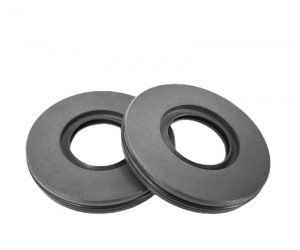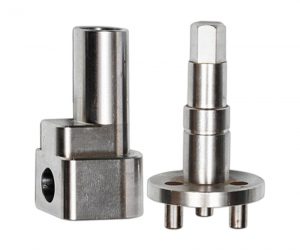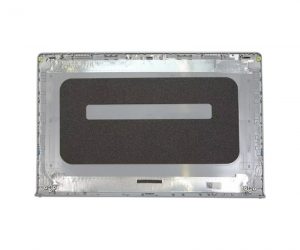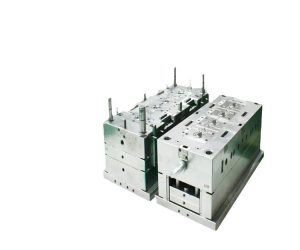The price of plastic mold processing is affected by a variety of factors that determine the complexity, quality, and efficiency of the mold manufacturing process. It is important for mold manufacturers and customers to understand these factors so that they can determine a fair and competitive price. The following are key factors that determine the price of plastic mold processing:
Mold complexity: The complexity of the mold design has a great impact on the processing price. This includes the complexity of the part shape, the number of cavities, whether there are undercuts or threads, and the overall difficulty of manufacturing the mold components. More complex molds require more advanced processing techniques and additional labor, which leads to increased costs.
Mold size and dimensions: The size and dimensions of the mold directly affect the requirements of materials and labor. Larger molds generally require more materials and processing time, resulting in higher processing prices.
Material selection: The material selection used for mold components can affect costs. Different materials have different costs and properties, and some high-performance materials may be more expensive but provide better durability and life.
Delivery time and delivery deadlines: The urgency of the order and the required delivery time can affect the processing price. Expedited orders or tight delivery deadlines may require additional charges because of the need to speed up production.
Tooling and Equipment: The availability of specialized tooling and equipment needed in the moldmaking process can impact pricing. Some molds may require specific machines, such as high-precision CNC machines or EDM equipment, which can add to the overall cost.
Mold Life: The expected mold life is an important consideration. High-quality molds, while more expensive initially, can save money in the long run due to reduced maintenance and replacement needs.
Part Quantity and Production Volume: The number of plastic parts expected to be produced can impact mold price. High-volume production often justifies the higher front-end cost of more durable and efficient molds, while low-volume production may opt for more economical options.
Surface Finish and Tolerances: The required surface finish and dimensional tolerances can impact the complexity and precision requirements of the moldmaking process. Tighter tolerances and specific surface finishes can result in additional costs.
Complexity of Cooling System: The design and complexity of cooling channels in a mold can impact cycle time and cooling efficiency. Well-designed cooling systems can reduce cycle time and increase productivity, but they can add to the initial cost of the mold.
Post-processing Requirements: Any additional post-processing steps, such as polishing, texture application, or secondary operations, can add to the price of the tool.
Intellectual Property and Proprietary Features: If the mold design contains unique and proprietary features or intellectual property, pricing may reflect the exclusivity and confidentiality of such designs.
In summary, the price of plastic mold processing is affected by multiple factors, including mold complexity, size, material selection, lead time, tooling, and part quantity. Manufacturers and customers need to carefully consider these factors and find a balance between cost and quality to ensure the successful production of molds for their specific applications.
With the rapid development of the plastics industry, the strength and precision of ordinary plastics and engineering plastics are constantly improving, and the application areas of plastic products are also expanding. Now, industrial products and daily necessities are increasingly inclined to use plastics.
Generally speaking, the structure of plastic molds is relatively complex, and the processing workload is also large, so the cost is relatively high. If you want to reduce the cost of plastic molds, you need to consider product design more. Without affecting the appearance of product assembly, design as many detachable parts as possible. At the same time, the appearance of the product does not need to be too fancy, and many unnecessary things should be removed. In addition, in the early stages of developing new products, we should try our best to listen to the suggestions of the mold factory. 3D drawings can be provided to the plastic mold factory for design review to avoid small changes to the mold in the future.
In order to further reduce the cost of plastic molds, the following measures can also be taken:
Optimize design: By improving product design and reducing the number and complexity of parts, the difficulty and cost of mold manufacturing can be reduced. Reasonable layout, simplified structure, and reduced special requirements are all key to optimizing design.
Material selection: Choosing the right plastic material can reduce the cost of mold manufacturing. Some high-performance engineering plastics have lower costs and better processing performance, and can be considered as substitutes for traditional materials.
Standardized design: Using standardized mold design can reduce duplication and customization needs, improve production efficiency and reduce costs.
Partnership: Establishing a long-term partnership with a mold factory can share resources and technology, and obtain more favorable prices and services.
Process optimization: By optimizing the production process, reducing waste and time costs, production efficiency can be improved and mold manufacturing costs can be reduced.
Technological innovation: Actively adopting new technologies and processes, such as 3D printing, rapid prototyping, etc., can shorten the mold manufacturing cycle and reduce costs.
In short, reducing the cost of plastic molds requires comprehensive consideration of factors such as product design, material selection and partners. By optimizing design and process, selecting suitable materials and partners, and adopting new technologies and processes, the cost of plastic molds can be effectively reduced, and production efficiency and competitiveness can be improved.
One advantage of plastic over metal is its plasticity, because it can be designed into more complex shapes and functions through plastic molds, with higher molding efficiency and lower molding costs. However, in order to ensure this, more sophisticated and complex mold flow control is required. Therefore, the cost of plastic molds is much higher than that of metal molds, but this cost can be amortized by output.
When developing plastic products, it is better not to save money in the mold link, so as to avoid endless troubles.
The factors that determine the processing price of plastic molds are as follows:
- The set life of the plastic mold (used to determine the material of the plastic mold, different materials have different prices);
- The structure of the product is complex or simple (it determines that the structure of the plastic mold is complex or simple, which is the processing cost);
- The size of the product (determines the size of the plastic mold material).
Plastic molds are a crucial component in the manufacturing industry. They are used to create a wide range of plastic products, from small components to large parts used in the automotive and aerospace industries. The processing price of plastic molds is a significant factor in determining the overall cost of manufacturing plastic products. In this article, we will explore the factors that determine the processing price of plastic molds.
Factors Affecting the Processing Price of Plastic Molds
- Design Complexity
The design complexity of the plastic mold is one of the main factors that determine its processing price. Complex molds require more intricate machining and longer processing times, resulting in a higher cost. The design complexity can also impact the durability and longevity of the mold, as more complex designs may be more susceptible to wear and tear over time.
- Material Selection
The material used to manufacture the plastic mold can also impact its processing price. High-performance materials, such as tool steels and titanium alloys, are more expensive than standard materials, such as aluminum and carbon steel. The material selection can also impact the durability and longevity of the mold, as high-performance materials are typically more resistant to wear and corrosion.
- Manufacturing Process
The manufacturing process used to create the plastic mold can also impact its processing price. Advanced processes, such as CNC machining and EDM, are more expensive than traditional processes, such as manual machining. The manufacturing process can also impact the lead time required to create the mold, as advanced processes typically require longer processing times.
- Mold Size
The size of the plastic mold is another factor that can impact its processing price. Larger molds require more material and machining, resulting in a higher cost. The size of the mold can also impact the lead time required to create it, as larger molds typically require longer processing times.
- Mold Complexity
The complexity of the mold is another factor that can impact its processing price. Complex molds require more intricate machining and longer processing times, resulting in a higher cost. The complexity of the mold can also impact the durability and longevity of the mold, as more complex designs may be more susceptible to wear and tear over time.
- Quantity
The quantity of plastic molds required can also impact the processing price. Larger quantities typically result in lower unit costs, as manufacturers can leverage economies of scale to reduce the overall cost. Smaller quantities, on the other hand, may result in higher unit costs, as the fixed costs associated with mold creation are spread over a smaller number of units.
The Impact of Design Complexity on Processing Price
The complexity of a plastic mold's design is a big deal when it comes to figuring out how much it will cost to make. The more detailed and tricky the design, the longer and harder it is to make, which means you end up paying more. Also, a really fancy design might not last as long because it can wear out faster over time.
To keep costs down, manufacturers can tweak the design to make production smoother. This means simplifying the design where they can and using cool tech like CAD (Computer-Aided Design) and CAM (Computer-Aided Manufacturing) to speed up the making process.




